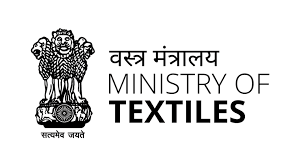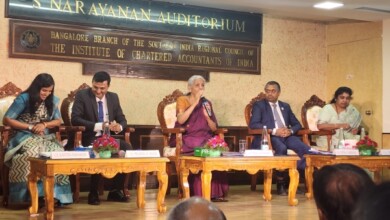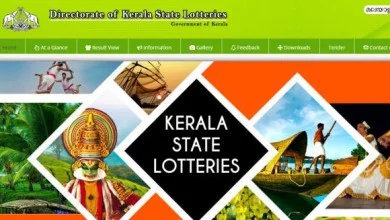Government creating enabling conditions for growth of textile industry and handlooms in India through its various schemes/initiatives

The government provides platforms to the agencies/weavers in domestic as well as overseas markets for promotion of marketing of handloom products produced across the country. Also, government creates a conducive environment and provide enabling conditions for textile industry in the country through its various schemes/initiatives.
The following schemes have been implemented by government since 2014 to promote textile industry in the country and globally:
- Rebate of State and Central Taxes and Levies (ROSCTL): With effect from 07.03.2019, the Central Government has launched a new scheme viz. Rebate of State and Central Taxes and Levies (ROSCTL) on Export of Garments/Made-ups. The ROSCTL Scheme provides rebate of State and Central Taxes and Levies in addition to the Duty Drawback Scheme, through the Scheme on Export of Garments/Made-ups at notified rates and value caps and will remain in force upto 31.01.2020.
The Government decided to continue the RoSCTL (Rebate of State and Central Taxes and Levies) scheme until such time the RoSCTL scheme is merged with Remission of Duties and Taxes on Exported Products (RoDTEP) Scheme. For this purpose, the Government approved adhoc allocation of funds of Rs.7398 crore for FY 2020-21 for issuance of duty credit scrips under RoSCTL Scheme. Taking a major step to boost exports, Government decided to extend the benefit of the Scheme for Remission of Duties and Taxes on Exported Products (RoDTEP) to all export goods with effect from 1st January, 2021. Government had notified a special one-time additional ad-hoc incentive of upto 1% of FoB value to be provided for exports of apparel and made-ups to offset the difference between RoSCTL and RoSL + MEIS@4%, from 7.3.2019 to 31.12.2019. Further, in order to boost exports in MMF sector, Government has removed anti-dumping duty on PTA, a key raw material for the manufacture of MMF fibre and yarn. Government had removed anti-dumping duty on acrylic fibre, raw material for yarn and knitwear industry. Assistance is also provided to exporters under Market Access Initiative (MAI) Scheme. Government has enhanced interest equalization rate for pre and post shipment credit for exports done by MSMEs including textiles sector from 3% to 5% w.e.f. 02.11.2018. Benefits of Interest Equalization Scheme has been extended to merchant exporters from 02.01.2019 which was earlier limited to only manufacturer exporters. Merchandise Export from India Scheme (MEIS) was in operation from 1.4.2015 till 31.12.2020 for exports made (including textiles products) with an objective to offset infrastructural inefficiencies and associated costs involved in exporting goods/ products which were produced/ manufactured in India.
2. Special Package for Textile and Apparel sector: Rs 6000 crores package was launched in June 2016 to boost employment and export potential in the apparel and made up segments. This package consists of Remission of State Levies for garmenting and made-ups; additional production and employment linked subsidy of 10% under ATUFS for garmenting; assistance for the entire 12% employers’ contribution towards EPF; fixed term employment in garmenting, increasing overtime caps; and income tax concessions under section 80JJAA for the garmenting sector.
3. Amended Technology Up-gradation Fund Scheme (ATUFS): The amended Scheme was launched in January 2016 with an outlay of Rs 17822 Crores for technology upgradation of textiles industry with one time capital subsidy for eligible machinery. The scheme has been designed to mobilize new investment of about Rs 95 000 cr and employment for 35 lakh persons by the year 2022.
4. SAMARTH- With a view to address the skilled manpower requirement across textile sector, Scheme for Capacity Building in Textile Sector (SCBTS) is implemented. The scheme has been extended till March, 2024.
5. PowerTex India: A comprehensive scheme for development of Powerloom sector has been launched w.e.f 01.04.2017 to 31.03.2020 and extended upto March 2021 with components like Insitu-upgradation of plain Powerlooms, Group Work Shed Scheme, Yarn Bank Scheme, Common Facility Centre (CFC), Solar Energy Scheme, Pradhan Mantri Credit Scheme, etc.
6. Handloom sector: Government is implementing following schemes since 2014-15 onwards under which financial assistance is provided for raw materials, purchase of looms and accessories, design innovation, product diversification, infrastructure development, skill upgradation, lighting units, marketing of handloom products in domestic as well as overseas markets and loan at concessional rates: –
- National Handloom Development Programme (NHDP)
- Comprehensive Handloom Cluster Development Scheme (CHCDS)
- Handloom Weavers’ Comprehensive Welfare Scheme (HWCWS)
- Yarn Supply Scheme (YSS)
7.The India Handloom Brand (IHB) Scheme of Govt. of India was inaugurated and launched by the Hon’ble Prime Minister on 7th August, 2015 at Chennai on the occasion of the First National Handloom Day to promote the inherent strength of the Indian handloom products in the country. The IHB Scheme is aimed to promote the brand of handlooms and develop a niche market for the handloom textiles with distinct identity.
8. Silk Samagra: Government of India has been implementing a Central Sector Scheme “Silk Samagra” for development of sericulture in the country with components such as Research & Development, Training, Transfer of Technology and I.T Initiatives, support to seed organizations, coordination and market development and, quality certification Systems (QCS)/ Export Brand Promotion and Technology Upgradation. R&D efforts have also been initiated to evolve new products by blending silk with other fibres such as wool, coir, cotton etc., which have demand in international markets.
9. Scheme for Incubation in Apparel Manufacturing (SIAM): The Scheme for Incubation in Apparel Manufacturing (SIAM) was launched on pilot basis in January 2014 with initial outlay of Rs.38.80 crore for setting up three Incubation Centres @ Rs.12.93 crore /Incubation Centre. The objective of the Scheme is to promote new entrepreneurs in apparel manufacturing by providing them an integrated workspace with complete ecosystem and plug and play facility which help them in reducing time, cost and efforts involved in setting up a new incubation centre. Two projects for setting Incubation Centres i.e. SPINFED in Odisha & MPIIDC in Madhya Pradesh are under implementation.
10. Scheme for Textile Industry Workers’ Accommodation (STIWA): The Scheme for Textile Worker’s Accommodation was launched in 2014 with an outlay of Rs.45 crore for implementation during the 12th Five Year Plan. The objective of the Scheme is to provide safe, adequate and conveniently located accommodation for textile and apparel industry workers in the proximity of areas of high concentration of textile and apparel industries. Two such projects have been sanctioned in October, 2014 viz. Gujarat Eco-Textiles Park Pvt. Limited in Gujarat and Palladam Hi-Tech Weaving Park Pvt. Limited in Tamilnadu. Both projects have been completed as per scheme guidelines.
11. Jute (ICARE): A project Jute ICARE (Improved Cultivation and Advanced Retting Exercise) was introduced in 2015 for improving productivity and quality of raw jute through carefully designed interventions. The project has benefitted more than 1.9 lakhs farmers in various states in the country.
12. Scheme for Research and Development for the Textile Industry including Jute was approved in the 12th Five Year Plan from 2014-15 to 2018-19 with an outlay of Rs. 149 crore. The scheme has been designed with three major components as under:
- Component-I: Research and Development projects to be undertaken by reputed research agencies including Textile Research Associations (TRAs), research laboratories, universities, industry associations etc. engaged in research in the textiles and allied sector (Total Outlay: Rs.50 crore). The Scheme completed its tenure on 31st March, 2019, and has been extended up to 31st March, 2020.
- Component-II: Promotion of R&D in jute sector; transfer of technologies and dissemination activities in jute sector (Total Outlay: Rs.80 crore).
- Component-III: Benchmarking studies, knowledge dissemination and promoting green initiatives through R&D (Total Outlay: Rs.15 Crore).
13. Scheme for Promoting Usage of Geotechnical Textiles in North Eastern Region: The Scheme was launched on 24.03.2015 for a period of five years (2014-15 to 2018-19) with an outlay of Rs.427 crore. The objective of this Scheme is to promote and utilize Geotextiles in development of the infrastructure in the NE states by providing technological and financial support for meeting additional costs, if any, due to the usage of Geotextiles in existing/ new projects in road, hill/ slope protection and water reservoirs.
14. National Technical Textile Mission: The government has approved the proposal for creation of National Technical Textiles Mission for a period of 4 years (2020-21 to 2023-24) with an outlay of Rs.1480 crores. The focus of the Mission is for developing on usage of technical textiles in various flagship missions, programmes of the country including strategic sectors. The use of technical textiles in agriculture, aquaculture, dairy, poultry, etc. Jal Jivan Mission; Swachch Bharat Mission; Ayushman Bharat will bring an overall improvement in cost economy, water and soil conservation, better agricultural productivity and higher income to farmers per acre of land holding in addition to promotion of manufacturing and exports activities in India. The use of geo-textiles in highways, railways and ports will result in robust infrastructure, reduced maintenance cost and higher life cycle of the infrastructure assets.
15. Integrated Wool Development Programme” (IWDP) is being implemented since 2014 for development of woollen textile industry in major wool potential areas of the country. Under this Scheme, provision has been made to establish Common Facility Centres (CFCs) at major wool potential areas as the Woollen Industry require to modernize pre-loom and post-loom processing facilities for ensuring quality finished product. The scheme having provision for creating different kind of wool and woollen processing activities like- wool scouring, carding, dyeing, knitting, weaving. Establishing such CFCs helps in increasing wool processing capacity.
The details of achievements of Public Sector Undertakings (PSUs) are as follows:
- Cotton Corporation of India
- CCI has developed a mobile app, “Cott-Ally” wherein latest news regarding weather condition, Crop situation, best farm practices etc are available in regional languages which gives real time information. In addition, it is an authentic source of information regarding all government schemes related to cotton and information on best farm practices for sustainable production of good quality contaminant-free cotton to maximize the farm income. Live chat feature of this mobile app will benefit the user in such a way that whenever anyone selects the State, live chat will be routed to the CCI Branch office of that particular state, so that live chat can be made in the regional language of choice.
- CCI is promoting mechanization of cotton harvesting under Corporate Social Responsibility by equipping the marginal and small cotton farmers with hand held kapasplucker machines in a phased manner which reduced dependence on labour,reduce cost of production thereby higher financial returns. Use of Kapasplucker machine avoid contamination at farm level and improve the quality of cotton.
- For scientific assessment of quality equipped procurement centres with portable moisture meters having data transfer facility, micronaire testers and hand-held ginning machines. Further prescribed the quality norms upon ginning and pressing factories to give better quality of cotton as per parameters fixed for lint realization%, shortages and trash%. This step will improve brand image of Indian cotton
- Tender wizard platform approved by Ministry of Electronics and Information technology is used for conducting e-auction to sell its stock in a more transparent manner. It not only keep confidentiality of e-auction process but bidding is made on real-time basis which help in making price discovery based on the prevailing market.
- CCI is giving discount of Rs.300/- per candy in its regular sale price to MSME mills, Khadi and Village industry, Cooperative sector mills to help them in enhancing their competitiveness and efficiency.
- To increase the production of Extra Long Staple (ELS) cotton, distributed two lakh kgs of ELS cotton seeds in the state of Tamilnadu to cotton farmers through Tamil Nadu Government.
- Central Cottage Industries Corporation of India Limited (CCIC)
CCIC has supported rich heritage of art & craft in India through its retail emporia providing market platform to artisans and weavers(including national and state awardees)
- iii. National Textile Corporation Limited (NTC)
NTC is engaged in production of yarn and fabrics through its 23 mills in operation, located all over India producing around 550 lakhs KG of yarn and 200 lakhs meter of fabric per annum.
- iv. National Handloom Development Corporation Ltd (NHDC): In order to make available all types of yarn, basic raw material used in the Handloom sector to the eligible handloom weavers/agencies at Mill Gate Price, Government of India is implementing Yarn Supply scheme throughout the country. Further, in order to facilitate handloom sector/weavers to compete with Mill Sector, 10% price subsidy is also provided under Yarn Supply Scheme on cotton, domestic Silk, Woollen and linen hank yarn with quantity restrictions.
- Jute Corporation of India (JCI):
- Ensuring the market price levels of raw jute above Minimum Support Price through active presence of JCI procurement centres and judicious intervention as and when the prices fall below MSP while ensuring all payments direct to the accounts of farmers within three working days.
- Distribution of certified jute seeds were also carried out amidst total lockdown following all the Covid-19 protocols thereby helping to achieve 10-15% higher sowing over last year.
- New marketing channels for Jute Diversified Products have been launched including Franchisee and E-Commerce modes.
Corporation has taken up following innovative initiatives towards meaningful utilisation of CSR funds in the F.Y 2020-21:
- Supporting mother and child health care facility to five district hospitals in five jute growing aspirational districts (Darang, Goalpara Districts in Assam,NadiaDistrcit in West Bengal, Katihar and Purnia Districts in Bihar) as per the advice of the Department of Public Enterprises.
- Two women NGOs supported for imparting training to rural women artisans to manufacture quality Jute Diversified Products (JDP) so that the trained women artisans may start up own JDP manufacturing units.
- JCI has signed MOU with NSC on 19/08/2020 for sourcing of 1000 MT Certified Jute seed (Variety JRO-204) and has planned to commercially distribute the same to farmers.
This information was given in a written reply by the Minister of State for Textiles Smt. DarshanaJardosh in Lok Sabha today.




